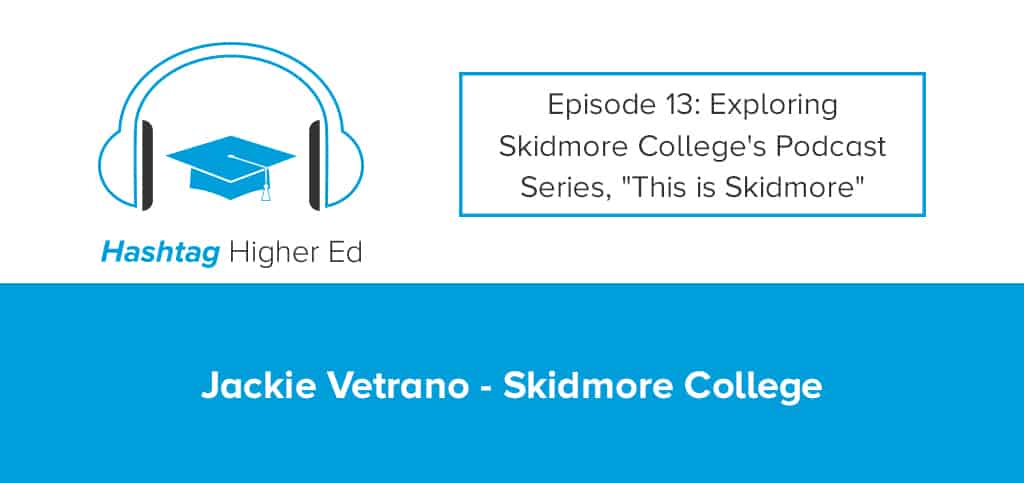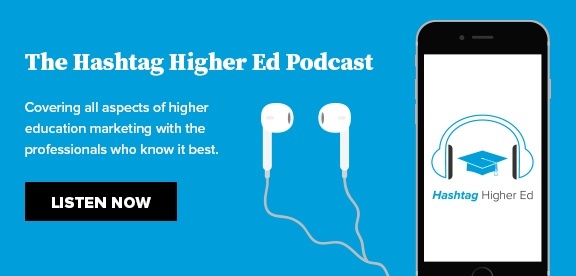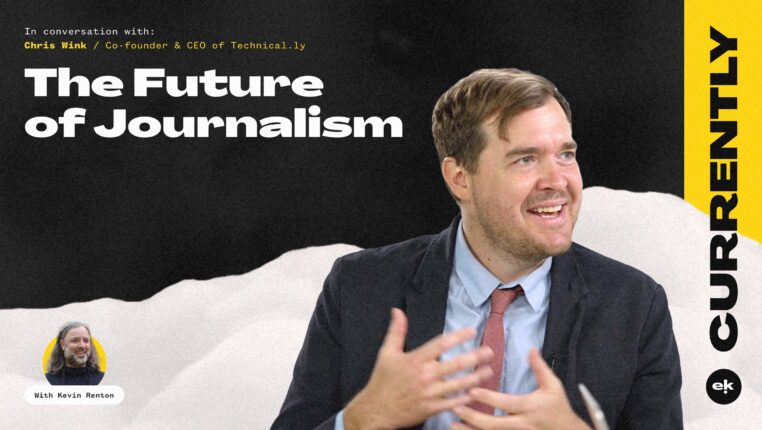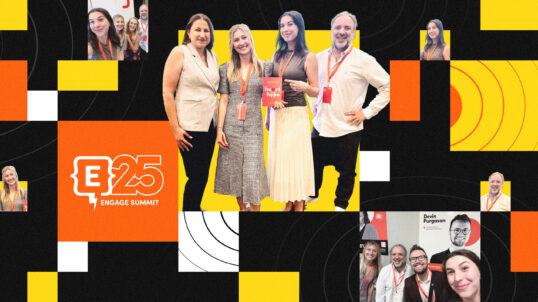If you read our blog with any degree of regularity, you know we’re kind of bullish on podcasting. We’ve talked about its use for storytelling and why we decided to start our own podcast in previous articles. But while podcasting continues to grow in popularity — Forrester’s 2017 Podcast Consumer report shows monthly listeners growing from 21% to 24% year over year — higher education has been slow to adopt podcasting as a marketing medium.
That’s not the case, however at Skidmore College, where their “This is Skidmore” podcast is nearing the conclusion of its third season. “This is Skidmore” invites guests from around campus and the community to share their stories about why they choose to study or work at Skidmore, what makes the College unique, and interesting research and academic work happening on campus.
The podcast series, geared particularly toward prospective students and their families, has garnered over 7,000 listens since its launch in March 2016, and shows no signs of slowing down.
To discuss the story behind, “This is Skidmore,” we welcomed Jackie Vetrano, Skidmore’s Social Media Coordinator, to the show. In this episode, Vetrano shares the story behind the creation of the podcast, how she sources podcast episode topics, her crash course in recording high-quality audio, and what she’s learned after three seasons of the “This is Skidmore” podcast.
Choosing a Theme for “This is Skidmore”
“At first, we needed to decide who this podcast was going to be for,” says Vetrano, who says the explosive growth in podcast made that decision more challenging than they expected. “We couldn’t really come up with an idea for one specific audience because this is a medium that was really exploding and a large portion of our demographic, from prospective students and their families all the way to our alumni, were engaged with it.”
Initially, Vetrano and her team targeted a weekly podcast, with each episode rotating among three identified themes, plus a catch-all category: Alumni Stories, Faculty Lecture, and Admissions. But upon further review, they decided it was unrealistic to publish a new episode each week that fit into one of the three categories, and settled on a bi-weekly show.
Sourcing Content Ideas for the Show
After nailing down some of the foundational goals for the podcast, Vetrano and her team brainstormed about 20 episode ideas. But beyond their initial episode ideas, they weren’t sure where the podcast was going to take them. “We knew we could only learn so much about podcasting before we actually did it. You can really only learn by doing.”
Vetrano admits that there was a period of time when the marketing team had exhausted their initial episode ideas and became a bit anxious about producing fresh content on a bi-weekly basis. But somewhat surprisingly, content ideas have gradually become one of the easier aspects of the podcast.
“We have a team here called the content team, which meets every week to talk about the stories that will appear on our website, the videos that we’re creating, and the podcast.” Vetrano says the team operates much like a press room, where topics will come across an individual’s desk and spur a larger conversation amongst the team as to the best way to tell a particular story.
“Now that I’m working closely with the content team, it’s very easy to know exactly what’s happening on campus and what could be told better as a podcast rather than just writing it out as a text-based story.”
While selecting stories for the show, Vetrano makes sure to keep their original themes in mind. “We want to make sure that we’re not leaning too much on one topic. If we do four straight episodes about athletics,” says Vetrano, “that’s actually two months where we’ve only focused on a topic, because we’re a bi-weekly podcast.”
Jackie Vetrano’s Top Tips for Podcasters
- Jump in, but with a plan. There’s going to be a point where you think you’re overthinking it. Right at that moment – go. Record an episode and take a listen. Do some test-runs with folks in your office and see what sounds right. Worst case, that strategy didn’t work out and you try again.
- Listen. Don’t talk. As a host, the show isn’t about you. If you’re talking more than the guest, that’s bad podcasting.
Recording High-Quality Audio
With a marketing medium that is based entirely on audio, recording high-quality audio is imperative. For Vetrano, this was an early lesson. “When we got started, we just used an omnidirectional snowball microphone and stuck it in the middle of all our guests in the middle of a circle,” says Vetrano, who laughs at the memory now. “What radio station has one microphone for all of its guests? None of them do. But we didn’t even consider that.”
Eventually, Vetrano approached Skidmore’s media services team for help. They weren’t disappointed. “They really hooked us up,” says Vetrano. Today, Vetrano records in a small recording studio, with comfortable chairs for guests, foam on the walls to absorb echo, and an excellent audio setup. “We have really nice standalone mics for each guest. We use one large mixing board, and that produces an audio file with separate tracks. So if one person is really loud compared to another person, it allows us to level that out on an individual level.”
Recording separate tracks also allows for easier editing. Vetrano tries not to edit her episodes too much. “Normally I’ll go through the episode and edit out dead air and any long tangents that might make the episode run long,” says Vetrano, who edits using Garageband and says editing takes her anywhere from 1 to 1 ½ hours. Keeping editing to a minimum saves Vetrano time, but it also creates a better product for her listeners. “I try to keep it as authentic as possible,” she says. “I want my listeners to get an authentic story.”
My sincere gratitude to Jackie Vetrano for joining the Hashtag Higher Ed Podcast. You can find Jackie on LinkedIn or on Twitter at @jackievetrano. You can also listen to Jackie on the Higher Ed Social Podcast, where she is a co-host with Belmont University’s Lougan Bishop. To learn more about the “This is Skidmore” podcast, visit www.skidmore.edu/podcast.
Listen to the full episode to hear Vetrano share insights on approaching guests about appearing on the show, the level of scripting and planning that goes into each episode, how Skidmore College is promoting podcast episodes, and how Vetrano evaluates success with a marketing channel that is notoriously limited on analytics.
You can listen to this episode on Soundcloud, iTunes, Google Music, or wherever podcasts are found. To explore all episodes of the Hashtag Higher Ed podcast and sign up for alerts regarding new episodes, visit our Hashtag Higher Ed hub.




